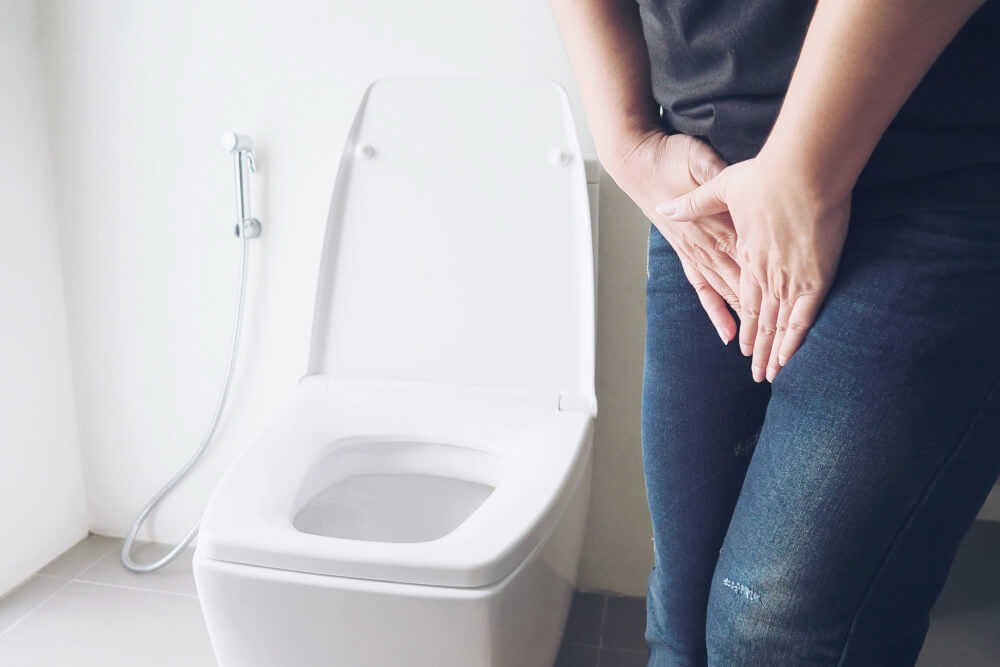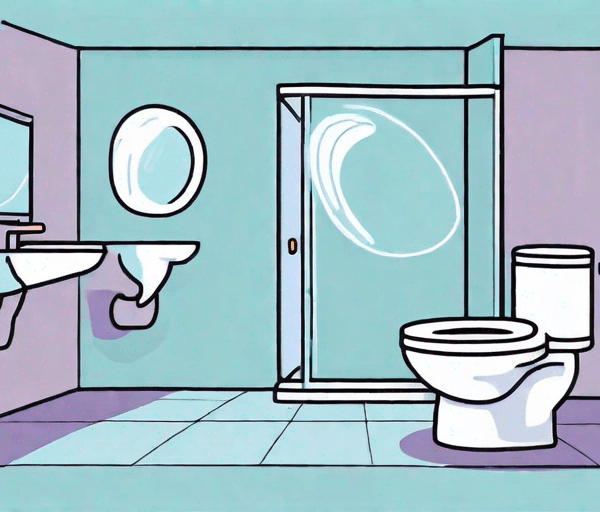Calcium oxalate is a compound that plays a significant role in our bodies. Understanding its properties and implications is crucial to maintaining good health. In this article, we will delve into the world of calcium oxalate, exploring its formation, impact on our bodies, and ways to manage and prevent its presence in urine.
Understanding Calcium Oxalate
What is Calcium Oxalate?
Calcium oxalate is a chemical compound that combines calcium ions and oxalate ions. It is naturally present in various foods and beverages, including fruits, vegetables, nuts, and tea. When consumed, it is absorbed by our bodies and excreted primarily through urine.
Calcium oxalate is a fascinating substance that has been studied for many years. It was first discovered in the early 19th century by a chemist named Friedrich Wöhler. Since then, scientists have been intrigued by its unique properties and its role in our bodies.
One interesting fact about calcium oxalate is that it can form crystals. These crystals can be found in various parts of our bodies, such as the kidneys, where they can sometimes lead to the formation of kidney stones. Understanding how these crystals form and how they can be prevented is an important area of research.
The Role of Calcium Oxalate in the Body
Calcium oxalate serves as a building block for the formation of many tissues in our bodies, such as bones, teeth, and connective tissues. It also plays a role in kidney function, where it helps maintain the balance of calcium and oxalate levels.
Our bodies have a complex system for regulating calcium and oxalate levels. When the balance is disrupted, it can lead to various health problems. For example, if there is too much calcium oxalate in the urine, it can crystallize and form kidney stones. These stones can cause severe pain and discomfort and may require medical intervention to remove.
On the other hand, if there is not enough calcium oxalate in the body, it can lead to weakened bones and teeth. Calcium oxalate is an essential component of these structures, and without it, they may become brittle and prone to fractures.
Researchers are constantly studying the role of calcium oxalate in the body and how it can be managed to promote optimal health. By understanding its functions and the factors that influence its levels, we can make informed choices about our diet and lifestyle to maintain a healthy balance.

The Formation of Calcium Oxalate Crystals in Urine
Calcium oxalate crystals are a common occurrence in urine when the concentration of calcium and oxalate becomes too high. These tiny solid particles have the potential to clump together, leading to various health issues.
The process of crystal formation begins when the urine becomes supersaturated with calcium and oxalate. As the concentration of these substances increases, they start to bond together, forming small crystals. Initially, these crystals may be too minuscule to cause any noticeable symptoms or discomfort.
However, as time passes, these tiny crystals have the tendency to grow larger and become solid masses known as kidney stones. These stones can range in size from a grain of sand to a golf ball, causing severe pain and discomfort when they obstruct the urinary tract.
Factors Contributing to Crystal Formation
Several factors can contribute to the formation of calcium oxalate crystals in urine. One significant factor is the consumption of a diet rich in oxalate-containing foods. Foods such as spinach, rhubarb, beets, and chocolate are known to be high in oxalate, increasing the likelihood of crystal formation.
In addition to dietary factors, low fluid intake can also play a role in crystal formation. When the body is not adequately hydrated, urine becomes more concentrated, increasing the chances of crystal formation.
Furthermore, certain medical conditions can predispose individuals to the formation of calcium oxalate crystals. Conditions such as hyperoxaluria, a genetic disorder that leads to high oxalate levels in the urine, and urinary tract infections can contribute to crystal formation.
Moreover, certain medications can increase oxalate levels in the urine, promoting crystal formation. These medications include antibiotics, diuretics, and antacids containing calcium.
It is important to note that while these factors can contribute to crystal formation, not everyone who is exposed to them will develop calcium oxalate crystals. The formation of crystals is a complex process influenced by a combination of genetic predisposition, lifestyle factors, and overall health.
In conclusion, the formation of calcium oxalate crystals in urine is a multifactorial process influenced by various factors such as diet, fluid intake, medical conditions, and medications. Understanding these factors can help individuals make informed choices to minimize the risk of crystal formation and subsequent kidney stone development.
Implications of Calcium Oxalate in Urine
Calcium oxalate, a compound formed by the combination of calcium and oxalate, can have significant implications for one’s health when present in urine. Understanding the health risks associated with elevated levels of calcium oxalate is crucial in maintaining overall well-being.
Health Risks Associated with High Levels
Elevated levels of calcium oxalate in urine can lead to various health risks. The most significant concern is the formation of kidney stones, which can cause severe pain and discomfort. These stones, also known as renal calculi, are solid masses that develop in the kidneys when there is an excess of calcium and oxalate in the urine. The presence of these stones can obstruct the urinary tract, leading to excruciating pain during urination and the potential for urinary tract infections.
Furthermore, recurrent kidney stones can damage the kidneys and impair their function. The constant formation and passage of these stones can cause scarring and inflammation in the kidneys, leading to a decline in renal function over time. This can result in complications such as chronic kidney disease and even kidney failure if left untreated.
Symptoms and Diagnosis of Calcium Oxalate Crystals
Identifying the presence of calcium oxalate crystals in urine is essential for accurate diagnosis and appropriate treatment. While these crystals may not always cause noticeable symptoms, certain signs can indicate their presence.
Common symptoms include pain during urination, which can range from mild discomfort to intense pain. This pain is often described as a sharp, stabbing sensation and may be accompanied by a burning feeling. Additionally, blood in the urine, known as hematuria, can be a sign of calcium oxalate crystals. The presence of these crystals can irritate the urinary tract, leading to small amounts of blood being present in the urine. Frequent urination, urgency, and a persistent need to urinate are also potential symptoms.
If any of these symptoms are experienced, it is crucial to consult a healthcare professional for further evaluation. A healthcare professional can confirm the presence of crystals through a urine test. This test involves analyzing a urine sample for the presence of calcium oxalate crystals under a microscope. By identifying the crystals, healthcare providers can determine the appropriate treatment plan to manage the condition effectively.
In conclusion, understanding the implications of calcium oxalate in urine is vital for maintaining optimal health. The health risks associated with elevated levels of calcium oxalate, such as kidney stone formation and kidney damage, highlight the importance of early detection and appropriate management. If you experience any symptoms or suspect the presence of calcium oxalate crystals, seeking medical attention is crucial for accurate diagnosis and timely treatment.

Management and Treatment of Calcium Oxalate in Urine
Calcium oxalate in urine is a common condition that can lead to the formation of kidney stones. Fortunately, there are several strategies and interventions available to manage and treat this condition. In addition to dietary changes and lifestyle modifications, medications and medical interventions can be employed to prevent the formation of calcium oxalate crystals and alleviate symptoms.
Dietary Changes and Lifestyle Modifications
One of the key strategies to manage calcium oxalate in urine is to make dietary changes and adopt a healthy lifestyle. Limiting the intake of oxalate-rich foods is crucial in reducing the risk of crystal formation. Foods such as spinach, rhubarb, and chocolate are known to be high in oxalate and should be consumed in moderation. However, it is important to note that not all individuals will have the same response to oxalate-rich foods, and some may be more sensitive than others.
In addition to avoiding oxalate-rich foods, increasing fluid intake is highly recommended. Adequate hydration helps dilute urine and prevents the concentration of calcium oxalate, reducing the likelihood of crystal formation. It is generally advised to drink at least 8 cups (64 ounces) of water per day, but individual needs may vary depending on factors such as activity level and climate.
Maintaining a healthy weight is also beneficial in managing calcium oxalate in urine. Obesity and overweight can contribute to the development of kidney stones, so adopting a balanced diet and engaging in regular physical activity can help prevent their formation.
Medications and Medical Interventions
In cases where dietary modifications alone are insufficient, healthcare professionals may prescribe medications to help prevent the formation of calcium oxalate crystals. These medications work by reducing the production of oxalate or increasing the excretion of oxalate in urine. Commonly prescribed medications include thiazide diuretics, which reduce the amount of calcium in urine, and citrate supplements, which can help prevent the formation of crystals.
It is important to note that medication should only be taken under the guidance of a healthcare professional, as they will consider individual factors such as medical history, current medications, and overall health before prescribing any treatment.
In severe cases where kidney stones have formed and are causing significant pain or obstruction, surgical procedures may be necessary. These procedures aim to remove the kidney stones and alleviate symptoms. Common surgical interventions include extracorporeal shock wave lithotripsy (ESWL), which uses sound waves to break up the stones, and ureteroscopy, which involves the insertion of a thin tube to remove or break up the stones.
It is important to note that the choice of treatment depends on various factors, including the size and location of the kidney stones, as well as the overall health of the individual. Therefore, a thorough evaluation by a healthcare professional is essential to determine the most appropriate course of action.
In conclusion, the management and treatment of calcium oxalate in urine involve a combination of dietary changes, lifestyle modifications, medications, and medical interventions. By adopting a healthy lifestyle, limiting the intake of oxalate-rich foods, and staying hydrated, individuals can reduce the risk of crystal formation. In cases where dietary modifications are insufficient, medications may be prescribed to prevent the formation of calcium oxalate crystals. In severe cases, surgical procedures may be necessary to remove kidney stones and alleviate symptoms. It is important to consult with a healthcare professional to determine the most suitable treatment plan based on individual needs and circumstances.
Prevention Strategies for Calcium Oxalate Formation
Hydration and its Role in Prevention
Staying properly hydrated is crucial in preventing the formation of calcium oxalate crystals. Drinking an adequate amount of water helps dilute urine and reduce the concentration of calcium and oxalate, thereby reducing the risk of crystal formation.
In addition to diluting urine, proper hydration has other benefits in preventing calcium oxalate formation. When the body is well-hydrated, it promotes optimal kidney function. The kidneys play a vital role in filtering waste products, including calcium and oxalate, from the blood. By maintaining adequate hydration, the kidneys are better able to flush out these substances, preventing their accumulation and subsequent crystal formation.
Furthermore, staying hydrated helps prevent urinary tract infections (UTIs), which can increase the risk of calcium oxalate formation. UTIs can lead to inflammation and irritation of the urinary tract, creating an environment conducive to crystal formation. By drinking enough water, individuals can reduce the likelihood of developing UTIs and, consequently, lower their risk of calcium oxalate stone formation.

Importance of Regular Check-ups and Tests
Regular check-ups with healthcare professionals are essential, especially for individuals at a higher risk of developing kidney stones. Through routine tests, doctors can monitor calcium and oxalate levels in urine and provide appropriate guidance and treatment if necessary.
During these check-ups, healthcare professionals may also assess other risk factors for calcium oxalate formation, such as dietary habits and family history. By identifying these risk factors, individuals can make informed lifestyle changes to reduce their risk of developing kidney stones.
Furthermore, regular check-ups allow for the early detection of any underlying medical conditions that may contribute to calcium oxalate formation. Certain medical conditions, such as hyperparathyroidism or inflammatory bowel disease, can increase the risk of kidney stone formation. By addressing these conditions promptly, healthcare professionals can help prevent the recurrence of calcium oxalate stones.
Exploring calcium oxalate in urine and its implications is crucial in managing and preventing kidney stone formation. By understanding the role of calcium oxalate, its formation process, and implementing proper management strategies, individuals can reduce the risk of health complications and maintain kidney health.
Furthermore, it is important to note that prevention strategies may vary depending on an individual’s specific circumstances. Healthcare professionals can provide personalized recommendations based on factors such as age, gender, medical history, and overall health status. By working closely with your healthcare providers, individuals can develop a comprehensive prevention plan tailored to their unique needs.



